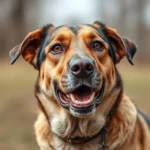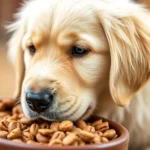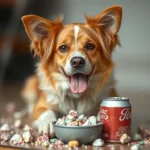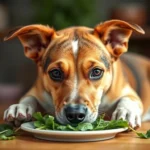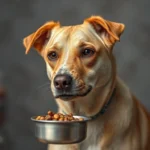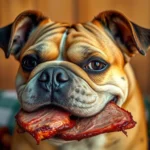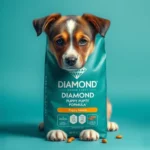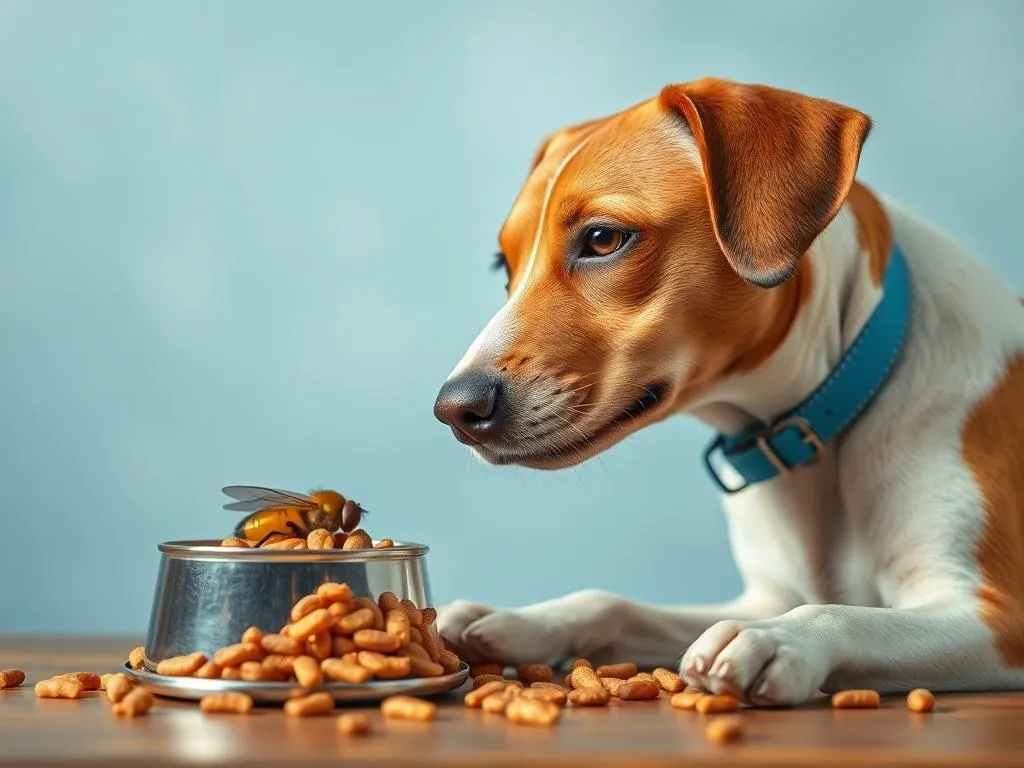
Introduction
Dog nutrition is a critical aspect of responsible pet ownership, ensuring that our furry friends receive the balanced diet they need for optimal health. From puppyhood to their senior years, the nutritional needs of dogs evolve, making it essential for owners to stay informed about dietary requirements. However, one common challenge many dog owners face is the issue of food storage, particularly when it comes to keeping flies away from dog food.
Flies are often attracted to dog food for several reasons, including the appealing odors and moisture content. Not only can these pests create an unpleasant feeding environment, but they also pose health risks. Flies can carry harmful bacteria and diseases that could contaminate your dog’s food and lead to serious health issues. Therefore, understanding how to manage your dog’s nutrition while safeguarding their food from flies is of utmost importance.
This article will provide actionable tips on how to keep flies away from dog food while educating you on the best practices for maintaining your dog’s food quality.
Understanding Dog Nutrition
Essential Nutrients for Dogs
A well-balanced diet for dogs consists of several essential nutrients:
- Proteins: Critical for growth, repair, and maintenance of body tissues, proteins are essential for your dog’s overall health. They play a vital role in muscle development and immune function.
- Carbohydrates: These serve as a primary energy source for dogs. While dogs can thrive on diets low in carbs, a moderate intake can provide necessary energy, especially for active breeds.
- Fats: Healthy fats are crucial for maintaining skin and coat health, providing a concentrated source of energy, and supporting cellular function.
- Vitamins and Minerals: These micronutrients play various roles, from supporting the immune system to aiding in bone health. A diet rich in vitamins and minerals is essential for a dog’s overall well-being.
Common Dog Food Types
Understanding the different types of dog food available can help you make informed choices:
- Dry Food vs. Wet Food: Dry kibble is convenient, shelf-stable, and aids in dental health. Wet food can be more palatable and hydrating for dogs but may require refrigeration after opening.
- Raw Diet: Some owners opt for a raw diet, which consists of uncooked meats, fruits, and vegetables. While it can offer certain benefits, there are also risks associated with bacterial contamination.
- Homemade vs. Commercial Dog Food: Homemade diets can be tailored to specific health needs but require careful planning to ensure nutritional adequacy. Commercial dog foods are formulated to meet AAFCO standards and are generally reliable.
Signs of Poor Nutrition in Dogs
Monitoring your dog’s health can help identify nutritional deficiencies:
- Changes in coat condition: A dull, flaky coat may indicate insufficient fatty acids or overall poor nutrition.
- Weight fluctuations: Unexplained weight loss or gain can signal dietary imbalances or health issues.
- Digestive issues: Frequent gastrointestinal problems, such as diarrhea or vomiting, may point to an inappropriate diet.
The Problem with Flies and Dog Food
Why Flies are Attracted to Dog Food
Flies are drawn to dog food for several reasons:
- Odor and moisture content: Dog food, especially wet food or leftovers, emits odors that attract flies. Moisture is a significant factor, as flies thrive in humid environments.
- Food leftovers and spills: Leaving uneaten food or spills around feeding areas creates a hotspot for flies.
- Environmental factors: Warm weather and outdoor feeding can exacerbate the problem, as flies are more active during hotter months.
Health Risks Associated with Flies
The presence of flies around your dog’s food can lead to several health risks:
- Disease transmission: Flies are known carriers of various diseases, and their presence can increase the risk of spreading these pathogens to your dog.
- Contamination of food and water: Flies can contaminate food and water bowls with bacteria, leading to gastrointestinal issues in dogs.
- Allergic reactions in dogs: Some dogs may have allergic reactions to fly bites, resulting in discomfort and potential health complications.
Effective Strategies to Keep Flies Away from Dog Food
Proper Food Storage Techniques
Effective food storage is crucial in preventing fly infestations:
- Airtight containers: Store dog food in airtight containers to keep odors contained and minimize moisture exposure. Look for durable, food-grade containers that can hold the amount of food you purchase.
- Refrigeration for perishable foods: If your dog eats wet or fresh food, store it in the refrigerator as soon as possible to prevent spoilage and reduce fly attraction.
- Regular cleaning of food storage areas: Maintain cleanliness in areas where dog food is stored. Regularly wipe down surfaces and check for any spills or leaks.
Environmental Control
Creating an environment that minimizes fly attraction is key:
- Keeping the feeding area clean: Clean up any spilled food immediately and wash food and water bowls regularly to prevent odors and residues that attract flies.
- Using fly traps and repellents: Consider placing fly traps around the feeding area. Repellents can also be effective; just make sure they are safe for pets.
- Landscaping tips to deter flies: Keeping your yard tidy, trimming overgrown vegetation, and managing waste can help reduce fly populations.
Natural Remedies and Alternatives
Using natural ingredients can be an effective and safe way to repel flies:
- Essential oils that repel flies: Oils like lavender, peppermint, and citronella can deter flies. Mix a few drops with water in a spray bottle and lightly mist around the feeding area (ensuring that it is safe for your dog).
- DIY fly repellents safe for dogs: A mixture of vinegar and water can act as a natural repellent. Spraying this solution around the feeding area can help keep flies at bay.
- Natural deterrents: Citrus peels and certain herbs like basil can also repel flies. Placing these in the feeding area may help deter them.
Best Practices for Feeding Dogs
Feeding Schedule Management
Establishing a regular feeding schedule can help control waste and minimize fly attraction:
- Regular feeding times: Feeding your dog at specific times can help reduce the amount of leftover food. This not only helps with nutrition but also keeps food from sitting out for long periods.
- Portion control: Monitor the amounts you feed your dog to reduce leftovers that can attract flies.
Cleaning Up After Feeding
Post-meal cleanup is essential to keep flies away:
- Immediate cleanup: Promptly remove food and water bowls after your dog has finished eating. Wash them thoroughly to eliminate any lingering odors.
- Strategies for outdoor feeding areas: If you feed your dog outside, consider using a designated feeding mat to contain spills and make cleanup easier.
Monitoring Dog’s Food Intake and Health
Keeping track of your dog’s eating habits can provide valuable insights:
- Keeping track of food consumption: Monitor how much your dog eats to ensure they are receiving the proper nutrition and not leaving excessive food behind.
- Observing changes in behavior or health after eating: Pay attention to any changes in your dog’s behavior or health that may arise after meals, as these could indicate dietary issues.
Conclusion
Maintaining your dog’s nutrition while ensuring their food remains free from flies is essential for their health and well-being. By understanding the nutritional needs of dogs and implementing effective strategies to keep flies away from dog food, you can create a safe and healthy feeding environment.
Incorporate the discussed practices into your routine, and watch your dog thrive in a pest-free atmosphere. Remember, a healthy dog is a happy dog, and keeping their food uncontaminated is a significant step toward achieving that happiness.
